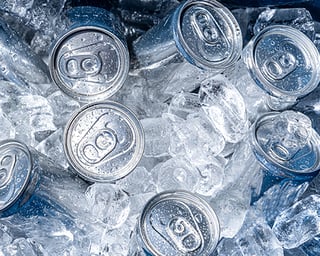New Innovations Pour Into the Alcoholic Beverages Space
NATIONAL REPORT — Hard seltzers, ready-to-drink (RTD) cocktails and flavored malt beverages have all had their moment in the spotlight. And while trends wax and wane, industry data projects that these drinks will continue driving consumers’ alcohol consumption and purchase patterns for several years to come — and that means convenience store retailers must embrace the “Beyond Beer” category to capture the sales buzz these beverages deliver.
“The past few years have seen a significant rise in the popularity of alcoholic beverage segments together referred to as ‘Ready to Drink’ or ‘Beyond Beer,’” according to the 2021 RTD/Beyond Beer Path to Purchase Study from VideoMining, a provider of in-store behavior analytics for CPG retail. “Numerous competitive products have entered the market with a multitude of flavors, functional benefits, package formats, and alcohol bases.”
IWSR, an authority on the global beverage alcohol market, reported that the RTD category posted double-digit global growth in 2020 — up 26.4 percent.
“It was the only beverage alcohol category to grow at all during the COVID crisis, resonating with consumers across all demographics, and driven by the trend for convenience, refreshment and flavor,” said the company’s Drinks Market Analysis released in June 2021.
The Beyond Beer category’s varied segments include hard seltzers, ready-to-drink cocktails, flavored malt beverages (FMBs), hard kombucha, hard water, hard coffee, cheladas, and more.
For many c-store retailers, the sheer scope of new alcoholic beverages hitting the market is almost too much to grasp, and it’s creating some merchandising headaches.
Managing the Mix
So, how can c-stores pick products that make the most sense to stock in their limited amount of shelf space considering the tremendous influx of new products hitting the market?
Tracy Nguyen, senior director of category development at Anheuser-Busch, whose portfolio includes Cutwater Spirits canned cocktails, Bud Light Seltzer and NÜTRL Vodka Seltzer, says retailers should focus on the top brands across their top SKUs to ensure the right mix, while also differentiating the assortment with limited SKUs across a broader set of brands that can offer unique propositions like organic, high ABV, or unique flavors.
Sales data supports this approach as well. “Top brands are driving this segment, with the top five light cocktail brands delivering 84 percent of sales, while the top five mixed cocktail brands drive 70 percent of sales,” Nguyen reports.
Convenience channel shoppers’ hesitance to embrace innovative products, compared to other retail channels, is a factor operators should consider when picking product, notes Todd Bollig, senior director of category management and shopper insights at The Boston Beer Co., maker of Truly Hard Seltzer and Twisted Tea.
“We see the c-store shopper slower to move toward innovation, so focus on lead brands and proven winners, then take calculated bets on what’s new and innovative,” he said. “Stores have limited space, so placing the wrong bet will make inefficient use of the cooler space.”
With c-stores typically slow to reset — often just once a year — this approach is especially important, Bollig added. “If an item is not doing well for a whole year, it will set you behind,” he said. His recommendation is to take three to six months to see what’s doing well in other channels, then bring in the top performers. “Wait and see, then take the winners,” he advises.
Whatever SKUs retailers decide to carry in the limited space they have, there are ways to merchandise these products that will drive traffic, according to the experts.
“From a RTD cocktail perspective, the primary location should be warm with the parent category, and adjacent to the beer set to drive shopper traffic,” Nguyen said. “A shopper-centric shelf flow should be organized by ABV with light cocktails at the bottom and higher ABV mixed cocktails at the top of the shelf.”
The Boston Beer team offers stores a list of five steps they can take to elevate the hard seltzer segment (several of which could apply to the overall Beyond Beer category, too):
- Ensure proper space allocation incorporating growth rates;
- Build assortment on lead brands first;
- Monitor SKU performance to identify slow movers;
- Keep pace with innovation – swap slow movers outside of standard reset process; and
- Increase visibility to attract new shoppers through shelf position, blocking, signage and display.
Ultimately, c-stores will succeed in this fast-evolving category by being open and flexible, choosing products wisely, and making the most of available space — not by taking on every product because “they don’t want to miss anything that’s hot,” Bollig concluded.

